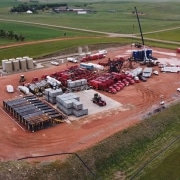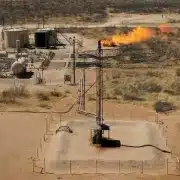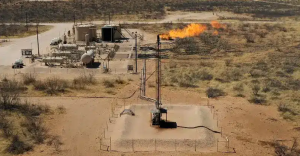Continued Leading The U.S.
Operators in the Permian Basin oil and gas mergers continued leading the U.S. both in growth and overall production of oil and gas, with numbers expected to climb in February.
About 5,000 barrels of oil per day (bopd) were expected to be added in the basin in February, according to the Energy Information Administration (EIA), for a total of about 5.97 bopd.
January’s average was estimated at about 5.96 million bopd, the EIA reported.
The Permian Basin, located in West Texas and southeastern New Mexico, continues to solidify its position as a dominant force in the global energy market. The latest report on shale basin production has revealed an impressive forecast for the Permian Basin’s daily production next month. In fact, the projected output for this region exceeds the combined production of every other shale basin mentioned in the report.
The Most Prolific Shale Basin
This remarkable achievement further cements the Permian Basin’s status as the most prolific shale basin in the United States. With its vast reserves of oil and natural gas, coupled with advancements in drilling technology, the Permian Basin has experienced a rapid expansion of production capacity in recent years. This growth has not only contributed significantly to the domestic energy supply but has also positioned the United States as a key player in the global energy landscape. The Permian Basin’s consistently high production numbers have garnered attention from investors and industry experts, who recognize the region’s potential for continued growth and profitability.
Furthermore, the Permian Basin’s success can be ascribe to several factors. Firstly, the region boasts a favorable geology that facilitates the extraction of oil and gas resources. The basin’s multiple stacked shale formations, including the Wolfcamp and Spraberry formations, provide ample opportunities for drilling and production. Additionally, the Permian Basin benefits from a well-established infrastructure network, including pipelines, refineries, and storage facilities, which allows for efficient transportation and processing of the extracted resources.
Not limited To Its Impressive Production
Moreover, the Permian Basin’s success story is not tight to its impressive production numbers alone. The economic impact of this booming industry extends beyond job creation and tax revenue. The increased production has led to a surge in investment and development activities, driving economic growth in the surrounding communities. Local businesses, service providers, and educational institutions have all benefited from the influx of capital and job opportunities generated by the Permian Basin’s energy sector.
In conclusion, the Permian Basin’s forecasted daily production for next month surpasses the combined output of all other shale basins mentioned in the report. This achievement solidifies the Permian Basin’s position as the leading shale basin in the United States and underscores its significance in the global energy market. With its favorable geology, robust infrastructure, and positive economic impact, the Permian Basin continues to be a driving force in the energy sector, attracting investment and contributing to the nation’s energy security and economic growth.
Click here to read the full article
Source: Carlsbad Current Argus
—
If you have any questions or thoughts about the “Oil and Gas Mergers” topic, feel free to contact us here or leave a comment below.











 The Permian Basin produced nearly 6 million barrels of oil a day in 2023. That’s more than Iraq, the United Arab Emirates or Kuwait, according to Peter McNally, analyst at Third Bridge.
The Permian Basin produced nearly 6 million barrels of oil a day in 2023. That’s more than Iraq, the United Arab Emirates or Kuwait, according to Peter McNally, analyst at Third Bridge.